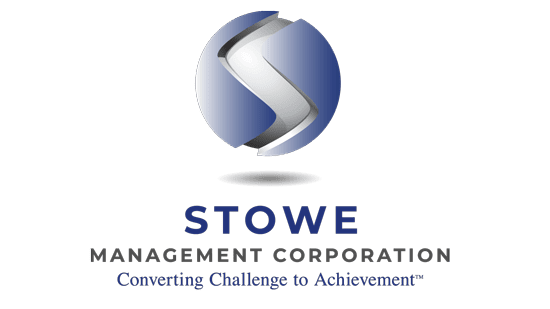What’s Your Early Warning System? Anticipating Opportunities and Threats By Mark H. Fowler
Whether your business is in crisis, growing rapidly, or just muddling along at an average growth percentage, understanding what is happening from many dimensions is essential for success. Traditionally, many of us have relied first and foremost on outside financial statement presentations and in-house management reporting to help guide us. Over the last decade or so, management has also begun to look at key indicators and dashboard presentations for added operational perspectives into a company’s situation.
These resources all have their place, but the tendency when using them is to focus purely on fact-based information and on historical events—even if it’s yesterday’s orders, product deliveries, product production, or overtime. Although valuable, such information often doesn’t give management a clear idea of what the future may bring.

The immediate question might be: Why is this type of information so important? We’ve gotten along without it, so why do we need it now?
One reason is that in today’s tough competitive climate, business needs to anticipate problems as early as possible and financial statements and key indicators expose symptoms of current challenges more than warning signs of future ones. Warning signs or signals are indicators of future situations and events—they surface before symptoms arise. For example, it’s common in management to say that being short of cash is a signal that a company is in trouble. In fact, companies that are regularly short of cash could easily have been in trouble for some time before a cash shortage happens. A cash shortage is thus a symptom of an existing problem, not a signal of a potential challenge.
These warning signs are not unlike the results of tests doctors might administer or questions they might ask to establish whether a patient has a risk of or tendency toward developing a certain condition. These inquiries might reveal a slightly higher-than-normal blood pressure, a less-than-ideal diet, a job with more than normal stress, or a family history of certain conditions. Nothing is seriously wrong (yet), but if the doctor had not decided to drill down and explore other information beyond the usual, he or she might not have become more sensitive to this patient’s possible future challenges.
Now think for a moment about the countless hours of time and energy that go into creating a company’s strategic plan and its corresponding operational plan for the next 1 to 3 or 1 to 5 years. At the time the plan is crafted, management attempts to anticipate and develop assumptions along factual and logical baselines. But in some cases, as we all know, the bottom line of all that analysis comes down to a good guess. So, wouldn’t it be prudent and wise to establish a methodology that catches the earliest signs of movement forward, backward, or no movement at all—and to do so from a day-to-day business/operational perspective?
Well, you might say, we’re not a human patient, we’re a business. There are no tests like that for us. In some cases that might be true, but often there’s a world of information about what’s happening on a more subtle level than we realize.
In our corporate reengineering world, we define a “crisis” or “turnaround” situation as an environment that, Perhaps very subtly over time, has lost ground in creating value for the business as a whole.
Let’s look at an example. In our corporate reengineering world, we define a “crisis” or “turnaround” situation as an environment that, perhaps very subtly over time, has lost ground in creating value for the business as a whole. We believe that it’s always important to be adding value all the time—such as in continually empowering and mentoring team members so they’re involved and ready to handle whatever happens.

With this new information, we can revisit our assumptions, verify whether we’re on the right track, add new ideas and plans of action, realize that there may be a whole
new issue or opportunity to explore—and, last but not least, become aware of some inconsistencies that could, if left unchecked, pose some real challenges for the company down the line. We can make appropriate changes, which may include investigating other opportunities or developing other scenarios alongside the current plan to support and maybe augment it.
In no way are we suggesting the elimination of financial or operational data, or that it be diminished in value. Such data can help flesh out this intangible but highly valuable data by adding depth, clarity, and texture.
Probably the warning sign we see most frequently before any visible erosion occurs is a shift in attitude: owner and/or manager believe “we have arrived” and begin to coast. There is no such thing as having “arrived,” even though you might want to bask in your success for a bit.
Enjoying your achievements is a good thing. But success of any size or shape ultimately just means additional considerations and often more time and more work. It’s as if you’ve moved into a bigger house: the bigger your house, the more there is to do, especially in the area of maintenance.
Probably the warning sign we see most frequently before any visible erosion occurs is a shift in attitude: owner and/or manager believe “we have arrived” and begin to coast. there is no such thing as having “arrived,” even though you might want to bask in your success for a bit. Enjoying your achievements is a good thing.
Another example of the intangible is something we call philosophical discontinuity. This occurs when owner and/ or managers are not on the same page from a conceptual or strategic perspective. In a startup business, this issue may not surface at first, because the clear focus is on survival and on growing the business in any way possible. But as the business grows and becomes more complex, strategic decisions become more complex as well, and the need for a more professional environment also emerges. This is when philosophical differences begin to show themselves. They commonly fall into these categories:
- Completing work—planning waiting until the last minute
- Motivating team members—carrot stick
- Communication style—dialoguing and listening telling
- Management style—delegation vs. “I have all the answers”
- Future vision—growth status quo
- Pricing—value low-ball

Let’s now apply this concept of intangibles to the more operational dynamic of cash flow. Here are a few examples of how paying attention to intangibles can warn us of potential cash flow trouble before it happens:
Evaluating which products or services customers find most valuable. The more appreciated the product or service, the more value it will be perceived to have, and the better the chances will be for collection.
Constantly evaluating which customers or clients best fit the organization. How do the customers treat the company? Customers who fit the company tend to like the company and will be more likely to pay their bill.
Having clear, well-documented, and proper collection policies. For instance, an inconsistent approach to collections can create a laissez-faire attitude in customers about payment. If you don’t display purpose and resolve in collecting your receivables, why should they, in remitting them?
Let’s try another example. In this case, the symptom is that the company fails to meet its revenue goals. Here are five possible signals that could have alerted management to the fact that the goals were not going to be accomplished and given them a chance to turn things around:
- The general manager has had several important action points on his or her to-do list that never seem to get any traction or make progress.
- There is no to-do list or operational Management has not developed or doesn’t understand the key action points for accomplishing the company’s goals.
- There is no plan for today and every day to grow the Operations management can’t really tell you what they have done to advance the overall business.
Now to complete the loop here, let’s outline some warn- ing signs that might become part of your early warning system:
An atmosphere of “blame” where it’s more important to find out “who did it” than to find out what happened and do something about it. This intangible creates a constant level of stress and discord and tends to prompt good employees to leave.
Trying to achieve goals by hitting home runs instead of by a combination of home runs, singles, doubles, and “one base at a time.” This intangible indicates an environment of unnecessary risk and blinds management to opportunities in plain sight.
A risk-averse management team that does not take chances to develop and expand its products And services… causes customer and market erosion and slows the momentum of the business, making it harder to take constructive risks for success.

Loosely managed policies and procedures, especially with the development and marketing of new projects and new products. This intangible creates confusion and wasted energy and limits success.
Not tracking processes and events (for example, not monitoring the pipeline, not capturing information about new sales). This limits the return on marketing and sales efforts, and opportunities tend to slip through your fingers.
Not following up on initiatives (for example, not understanding how a new program is doing). This almost immediately can lead to not making the course corrections needed to refine the process to be successful.
A risk-averse management team that does not take chances to develop and expand its products and services. This causes customer and market erosion and slows the momentum of the business, making it harder to take constructive risks for success.
Not eliminating the “1/20s.” A 1/20 for us is an individual whose lack of discipline, disgruntled attitude, and limited effectiveness can negatively affect the other 19 around him or her. This intangible erodes others’ attitudes, things don’t get done, and the talented people disappear.
Maybe you can identify with some of these signals— or maybe they’ve given you insights into other signals to watch for. There are many different ways to evolve and develop your own early warning signals or signs. When you combine them with the more traditional financial and operational information sources you’ve probably been relying on up until now, you can build an assessment sys- tem that helps your company better anticipate challenges and opportunities—and most importantly, allows you the luxury of time to do something about them before it’s too late. Building your early warning system takes time, but it is well worth the effort if you really want to be successful. Good luck!
Subscribe to our Podcast!
Join our podcast live! Receive our Newsletter. Benefit from Mark H. Fowler’s progressive insights for your success, you can subscribe for free and receive Mark’s valuable experience in Business Consulting, Crisis Management, Managing Growth & Profitability, Mergers & Acquisitions, Succession Planning, Systems & Operational Analysis and more.
Over the years, I have worked with many good corporate citizens, who know that many lives depend on the way they do business. In the process, not only have these businesses and organizations been more successful, but we have all had fun along the way.” –Mark H. Fowler

